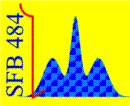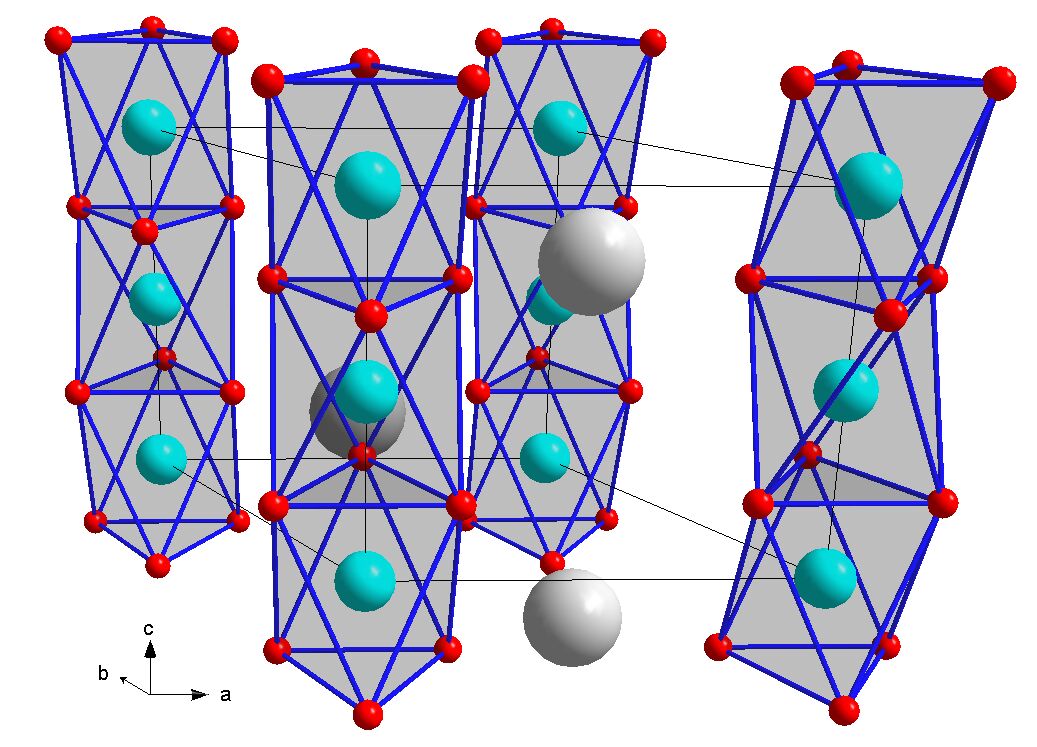
Second International Workshop 2004
Ordering Phenomena in Transition Metal Oxides
September 26 - 29, 2004, Wildbad Kreuth
|
Welcome Pictures taken at the Workshop Invited Speakers Program Poster Session Social Program Organization Technical Information Travel Information Weather SFB 484 Institute of Physics |
|
Invited Talk
|
|
| K. Schwarz (Vienna), P. Blaha, and V. Pardo | |
|
An LDA+U study of magnetic and orbital ordering in BaCoO3
|
|
|
The close connection between the electronic and magnetic structure
of Co oxides often determines their physical properties, which may
vary from mixed valence compounds, a colossal magneto resistive
material to a superconductor. BaCoO3 is a transition
metal oxide that has been studied over the years, since magnetic and
orbital degrees of freedom play an important role [1].
It crystallizes in the hexagonal-2H pseudo-perovskite structure with space group P63/mmc (Fig.1). Face-sharing CoO6 octahedra form chains along the c-axis with short Co-Co distances of 2.38 Å. The hexagonal arrangement of these chains leads to a much longer Co-Co distance of 5.65 Å between the chains, which makes it a quasi one-dimensional compound. The Ba ions are between the chains. 
Fig.1: Structure of BaCoO3. We studied the electronic and magnetic structure of this oxide by means of the full-potential augmented-plane-wave plus local-orbital (APW+lo) method [2] embodied in WIEN2k [3] (see www.wien2k.at). Exchange and correlation was treated by the generalized gradient approximation (GGA) but the on-site Coulomb repulsion was additionally included by LDA+U. The required parameters were checked within reasonable limits and finally fixed to U=5 eV and J=0.5 eV. The atomic positions in this structure can be relaxed by using the forces that act on the atoms and that are calculated within density functional theory. The Co4+ ion is in a low spin state and has a d5 configuration that leads to a distorted octahedral environment to avoid orbital degeneracy. According to GGA calculations the system would be metallic in contrast to experiment. With LDA+U, however, an insulating state is found, in which the d-orbitals show alternating orbital ordering along the c-axis (the chains). In the spin density one band dominates, in which the Co-d orbitals along the chain alternate between xy and x2-y2 symmetry. This orbital ordering has the largest effect in terms of energy stabilization. So far we have only studied the collinear cases and found the ferromagnetic ordering (along the chains) to be marginally more stable than the antiferro-magnetic. The influence of the magnetic structure is not negligible but much smaller, since orbital and spin degrees of freedom are decoupled. The latter occurs in orbitally degenerate systems, in which the magnetic interaction comes from a superexchange Co-O-Co mechanism with an angle of about 90 ° determined by the face sharing octahedral. [1] K.Yamaura, H.Zandbergern, H.Abe, and R.Cava, Solid St.Commun. 128, 96 (1999) [2] K.Schwarz, P.Blaha, G.H.K.Madsen, Comp.Phys.Comm. 147, 71-76 (2002) [3] P.Blaha, K.Schwarz, G.K.H.Madsen, D.Kvasnicka, J.Luitz:WIEN2k: An Augmented Plane Wave plus Local Orbitals Program for Calculating Crystal Properties. K.Schwarz, TU Wien, 2001 (ISBN 3-9501031-1-2) |
|
|
previous / next - Invited Speakers - Program |
|
| [ 21-Apr-17 ] | [ http://www.physik.uni-augsburg.de/sfb484/Kreuth2004/abstracts/schwarz.shtml ] |